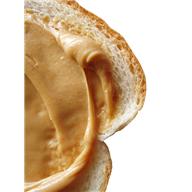 So you’re headed for a road trip… What do you do to keep up your healthy eating routine?
So you’re headed for a road trip… What do you do to keep up your healthy eating routine?
Luckily for most of you, this “dilemma” arises a few times a year only. I, on the other hand, deal with this every six weeks. As part of a health research study, a small team of us travel throughout the country collecting data to develop statistics about the country’s health. Like with anything, the more you do it, the better you get at it; I have to admit I’ve gotten pretty good at packing for these road trips.
This post comes at a perfect time, as with Thanksgiving around the corner, many of us are getting ready to travel. Before I begin telling you about what to do on the road to keep a healthy routine, it is important to be clear on what “healthy” actually entails. A healthy diet means you are consuming a moderate amount of calories while eating sufficient carbohydrates, proteins, fats, vitamins and minerals to sustain necessary functions in your body. Ideally, you want your sources to come from the various food groups. All of this becomes harder when you are on the road.
The solution: PLAN AHEAD.
Below, you’ll find some of my favorite on-the-road snacks, as well as a few snacks tips I gathered from my coworkers, some of which have been on the road for well over 13 years! The idea is that if you travel with items that are hard to find when you are on the road, you can have a little more freedom on your choices when you eat out and still meet your recommended intakes.
Fruit
For many, fruit is an enjoyable treat; one which they have no trouble eating the 1 ½ to 2 cups a day recommended by the United States Department of Agriculture (USDA). To increase the likelihood of meeting these recommendations:
- Carry fresh fruit. Some of the most portable and easy to find fruits include apples, bananas, or clementines. One of each a day will do the trick!
- Eat dried fruit (go for the unsweetened kind) or dehydrate your own. Check out the Backpacking Chef or Kitchen Stewardship for details on dehydrating fruits.If you don’t own a dehydrator, do not worry; fruits such as apples and bananas can be made into fruit chips by baking in them in the oven. Either method will shrink the fruit as it removes its high water content. Therefore, it is important to watch the portion size; a half cup of dried fruit is the equivalent of 1 cup of fresh fruit. If making your own, try these Baked Apple Chips.
- Make a trail mix by mixing your fruit with a variety of unsalted nuts and seeds (sprinkle a little salt on your own if necessary). This will provide you with healthy fats, protein, and additional fiber; all of which can help you stay fuller longer. To purchase just the necessary amounts of each ingredient for your trail mix, many Whole Foods Markets and other health food stores sell products in bulk so you can fill up a bag with as much, or as little, of each ingredient as you’d like. There are some great articles on making your own trail mix, visit 21 healthier trail mix ideas for inspiration and get creative!
Vegetables
The USDA recommends you consume 2 ½ to 3 cups of vegetables a day. We all know how difficult this can be, and being on the road only makes it more of a challenge.
- Pack baby carrots, broccoli and cauliflower florets, cherry tomatoes, and celery sticks, among others. Notice how each of these vegetables is a different color- that means more nutrients! Vegetable trays are a great and easy way to get a variety of cut up, ready-to-eat veggies. The good thing about vegetables is that they are much lower in calories, sugars, and carbohydrates than fruits are, saving you some extra calories for when you eat out.
- Carrots, potatoes and beets can be made into wholesome chips to snack on with the help of a dehydrator. Making your own can be time consuming, but oh, so worth it! Like fruits, vegetables can be transformed with the addition of spices. The Huffington Post featured a great article with 12 appetizing vegetable chip recipes.
Grains
Another recommendation that is hard to meet is that of whole grains. As recommended by the USDA, at least half of all your grains should come from whole grains. You’ll uncover that these whole grains are difficult to find when you are eating out.
- Granola bars are one of the easier ways to incorporate whole grains in your diet when you travel. Look for one with terms such as whole grain, whole wheat, stoneground whole, brown rice, or oats listed as the first ingredient and make sure it has protein and fiber, while avoiding those that are loaded with added sugars.Remember, you want a healthy, low calorie snack that is filling enough to keep you from stopping at every rest stop on the road! Personally, I’m a sucker for Kashi Trail Mix granola bars. At only 140 calories per bar, the provide you with 4 grams of fiber, 6 grams of protein and only 6 grams of sugar. They are filling yet not too heavy. Nevertheless, there are plenty of bars to choose from. I make it a point to travel with a few different kinds in order to satisfy my mood!
- Whole grain crackers with a nut or seed butter or cheese make a great snack!
If you decide to invest on a cooler you can go for a traditional one or the kind you can plug in. The cooler will help keep foods fresh and safe, avoiding food related illnesses. The food groups below are more likely to get contaminated and require cool storage temperatures.
Dairy
Obtaining appropriate dairy or dairy alternatives in your diet is important, a great source of Calcium, of which we should be consuming at least three servings a day.
- Pack a low fat yogurt. Both regular yogurt and Greek yogurt are sources of probiotics, the healthy bacteria in our gut.
- Part-skim cheese stick. At only 80 calories per stick, cheese sticks such as Sorrento Stringsters Part-Skim Mozzarella are a mess-free snack that provides you with 20% of the recommended calcium for the day and 7 grams of protein.
- An 8 oz carton of skim or low-fat milk will contribute one serving of dairy to your day. If you are a vegan or lactose intolerant consider lactose-free milk, or a calcium and vitamin D fortified milk alternative like soy milk or almond milk.
Protein
Because it is found in most foods, protein adds up quickly. Protein recommendations are made on an individual basis, depending on your weight. Most Americans get enough protein in their diet, and you’ll likely get your protein from one of the eateries on the road; however, incorporating it into some of your snacks can add to your level of satiety.
- Boiled eggs, turkey breast slices, and tuna or salmon packs (choose ones that require no draining to avoid the mess!) These options are high in protein and combined with some whole grain crackers or bread can be used to fill in for an emergency meal.
- Any kind of nut or seed butter, such as peanut butter or sunflower butter, can be spread on celery sticks or apple slices; you’ll not only get protein, but healthy fats and fiber, as well as incorporating some extra fruits and vegetables in your day.

- Pack a bean dip, such as hummus. Use it as a dip to your vegetables or pair it with whole grain crackers for a delicious, filling snack that supplies you with protein, fiber, whole grains, and vegetables! Now that’s what I call nutritious! If you’re making your own dip and would like an alternative to the traditional hummus, I recommend this simple white bean dip recipe. Also check out these healthy bean dip recipes which offer original ideas.
- In addition, if you are enjoying the delicious trail mix I suggested above or any of the suggestions made under the dairy category, you are also contributing to your protein intake for the day.
For more information on recommended daily intakes and additional samples to each food group visit visit, www.choosemyplate.gov.
Most importantly, keep in mind that whether you are traveling or not, there is no ‘perfect’ way to eat. Aiming for a balance is necessary to enjoy yourself without feelings of deprivation or guilt. Indulging once in a while is perfectly fine, just keep the term ‘moderation’ in mind and keep as active as you can! And be aware that no matter how many snacks you take, these shouldn’t be your sole source of food.
So where do you stop to eat? Which restaurants offer the best options? Look for another guest blog post in the future discussing some of the best places across the country to stop and eat a healthy meal!
by Carolina Arango, M.S. 
Dietary Interviewer for the National Health and Nutrition Examination Survey (NHANES)



